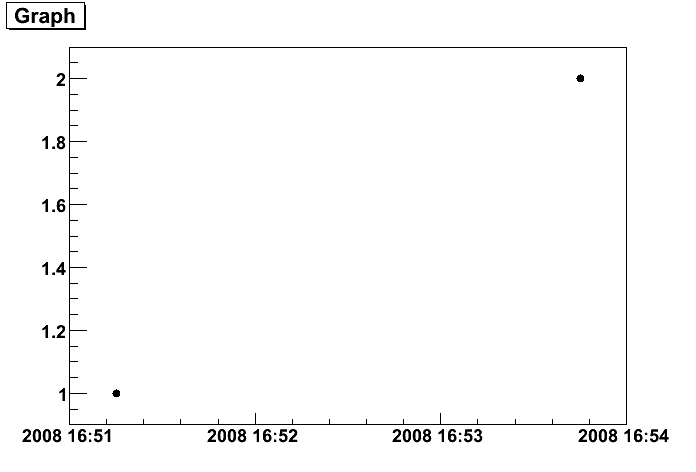Hello,
I have a TGraph with unix time on the horizontal axis. To display the correct date I am using as offset:
SetTimeOffset("%F 1970-01-01 00:00:00");
in this way the date (day, month, year) is correct but the hour is still one hour larger than it should be: for example I got 16:52:00 when I am expecting 15:52:00 (GMT+1) (or 14:52:00 UTC, so the problem is not the time zone). Then I tried to modify the offset and I found an odd behaviour:
with %F 1970-01-01 01:00:00 I still got 16:52
with %F 1970-01-01 02:00:00 I got 17:52
and so on.
with %F 1970-01-01 00:01:00 I still got 16:52
with %F 1969-31-12 23:00:00 I still got 16:52
So it looks like that if the offset is less than one hour after 1970-01-01 at midnight, it does not work properly. Indeed in the root manual it is stated that the offset should be larger than year 1995 so I am already well outside the accepted values, in any case, since unix time is a frequently used timestamp, I am wondering if there is a solution a part from the one I am going to adopt: subtract the unix time of a date well after year 1995 and then use this date as offset.
Thanks
Andrea